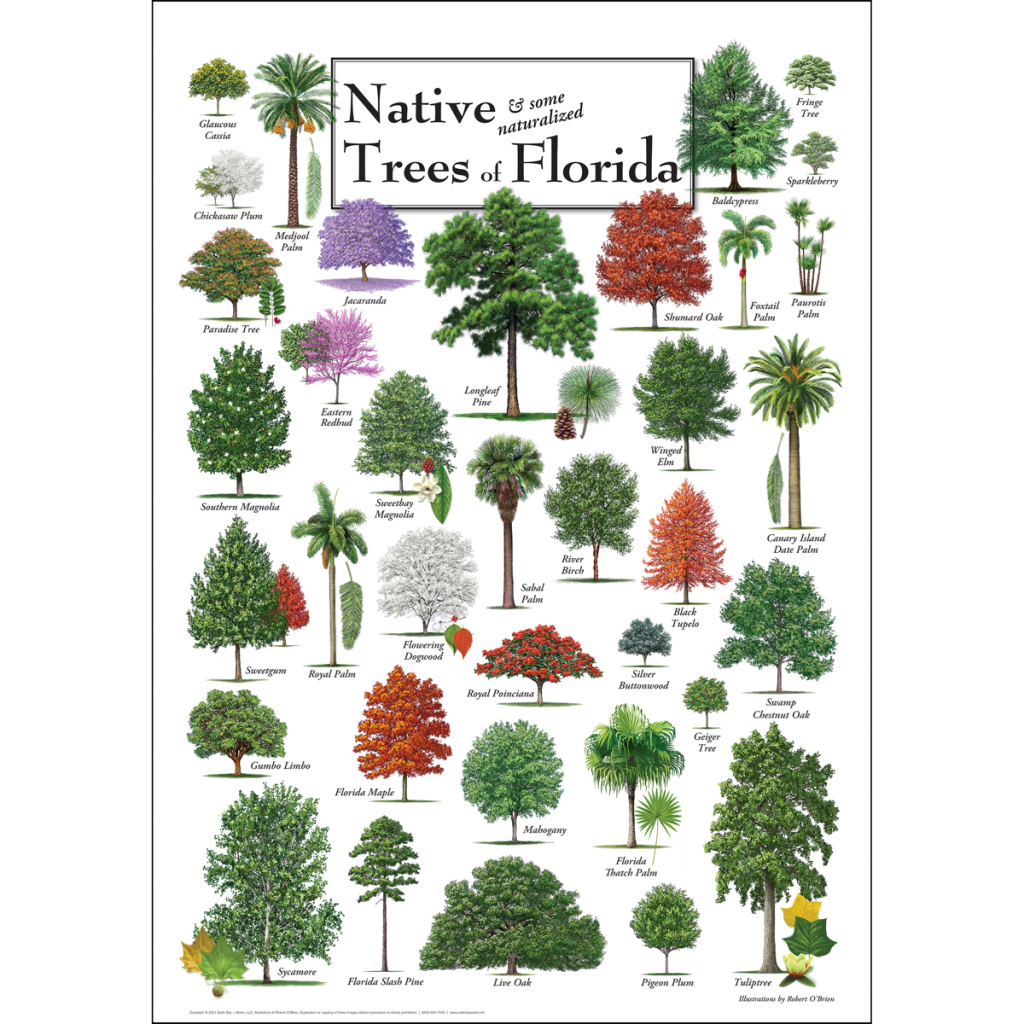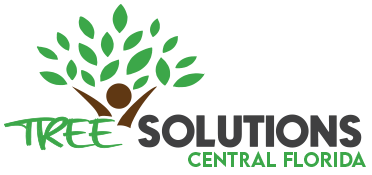Native Palms #
- Sabal Palm (Cabbage Palm) – Florida’s state tree. Hardy, salt-tolerant, and common in landscaping and wild areas.
- Royal Palm – Tall, smooth gray trunk, large feather-like fronds; iconic in South Florida.
- Saw Palmetto – Low-growing, shrubby palm; important for wildlife habitat.
Hardwoods #
- Live Oak – Massive, spreading canopy, often draped in Spanish moss. Symbol of the South and highly valued for shade.
- Southern Magnolia – Large glossy leaves, fragrant white flowers; both ornamental and native.
- Sweetgum – Star-shaped leaves that turn red and purple in fall; produces spiky seed pods.
- Red Maple – Colorful red flowers and foliage; tolerates wet soils.
Pines #
- Slash Pine – Tall, straight trunk; common in managed forests and landscapes.
- Longleaf Pine – Historic species, once dominant across the Southeast; long needles, very fire-resistant.
- Sand Pine – Grows well in sandy, poor soils; common in coastal scrubs.
Flowering & Ornamental #
- Jacaranda – Purple spring blooms; popular in Central and South Florida landscapes.
- Tabebuia (Trumpet Tree) – Pink or yellow trumpet-shaped flowers; drought-tolerant.
- Crape Myrtle – Not native but widely used; colorful summer flowers in shades of pink, red, or white.
Fruit & Nut Trees #
- Citrus Trees (Orange, Grapefruit, Lemon, Lime) – Iconic to Florida agriculture and home landscapes.
- Avocado – Popular in South Florida; thrives in subtropical climates.
- Mango – Large shade tree with delicious summer fruit.
- Pecan – Grows in North and Central Florida; produces edible nuts.
Wetland & Coastal Trees #
- Bald Cypress – Deciduous conifer found in swamps; known for “knees” (root structures).
- Pond Cypress – Smaller cousin of bald cypress; grows in shallow wetlands.
- Red Mangrove – Found along coasts; recognizable by stilt-like prop roots.
- Black Mangrove – Salt-tolerant; has pneumatophores (breathing roots).
Tropical & Subtropical #
- Royal Poinciana (Flamboyant Tree) – Fiery red/orange flowers; thrives in South Florida.
- Gumbo Limbo – “Tourist tree” (red, peeling bark like a sunburn). Fast-growing shade tree.
- Mahogany – Native hardwood; prized for lumber and shade.
✅ Tips for Homeowners in Florida
- Always match the tree to your soil type, salt exposure, and hurricane risk.
- Native species (like live oaks, bald cypress, and sabal palms) generally require less care and support wildlife.
- Consider mature size—many Florida trees grow very large and need plenty of space.





